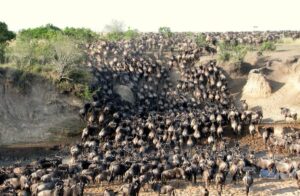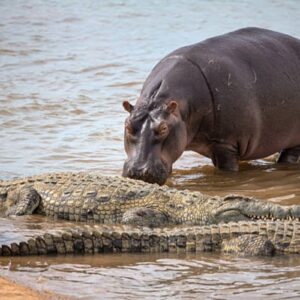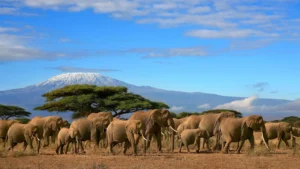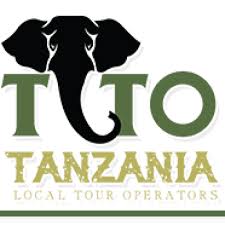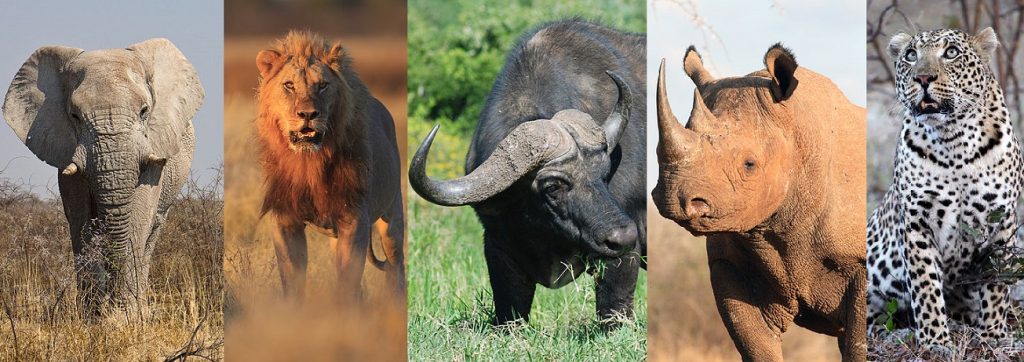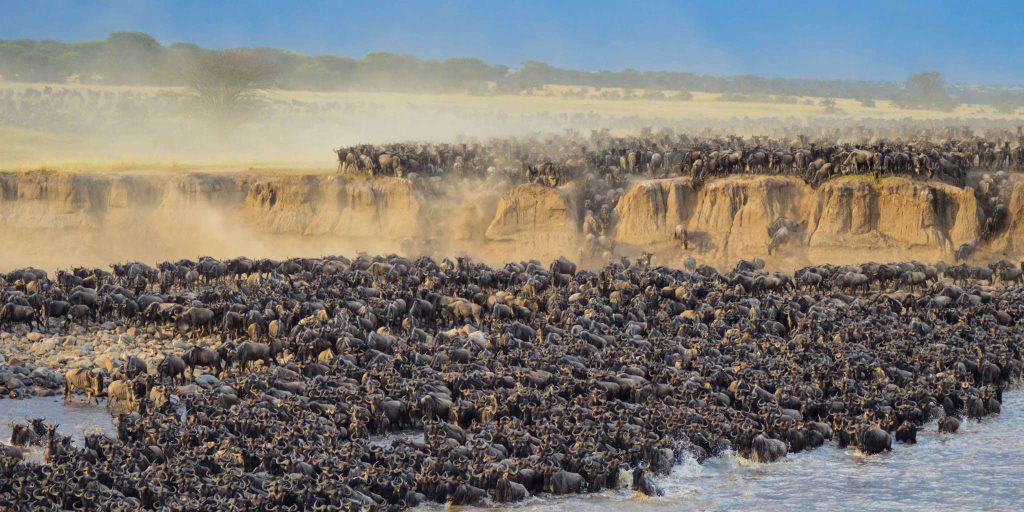The Fascinating Wildebeest Migration: A Spectacular Journey Across Africa
The Great Wildebeest Migration across Africa is one of the most fascinating natural events on the planet. Every year, thousands of wildebeests, along with zebras and other animals, embark on a journey to find food and water.
This migration mostly takes place in the Serengeti Plains in Tanzania and soon crosses into Kenya’s Maasai Mara, creating what many call a spectacular sight. The animals face many dangers along the way, such as crocodiles when they cross rivers or predators like lions which hunt them during their travels.
It’s pretty incredible how these creatures know when to go, even though it seems chaotic at times. The cycle repeats seasonally and supports not just wildlife but also local communities that rely on tourism related to this amazing journey!
Overview of the Great Wildebeest Migration
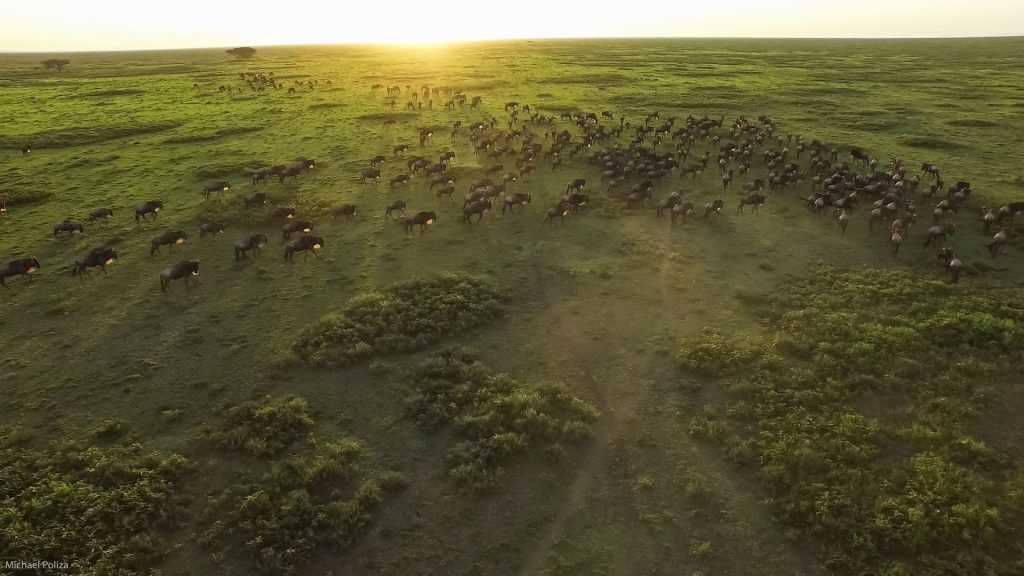
The Great Migration is a mesmerizing spectacle that showcases the incredible journey of over 1.5 million wildebeest traversing the vast landscapes of Tanzania and Kenya. This circular migration covers approximately 1,800 miles and is primarily driven by the quest for fresh grazing land and water. Accompanied by zebras and gazelles, the wildebeest form a massive moving herd that captivates onlookers with its sheer size and persistence.
This natural phenomenon follows a clockwise route, beginning and concluding in the Serengeti. It is not only a breathtaking sight but also a vital component of the Serengeti ecosystem, as it provides essential nutrients that sustain the environment. Predators such as lions, crocodiles, and hyenas closely follow the migration, seizing opportunities for prey as the herd moves.
Weather patterns play a crucial role in determining the timing and direction of the migration. Rainfall influences the availability of resources, prompting the wildebeest to adapt their path accordingly. This adaptability ensures the continuation of this extraordinary journey, attracting wildlife enthusiasts from around the world to witness one of Africa’s most impressive natural events.
Interesting Facts about the Migration
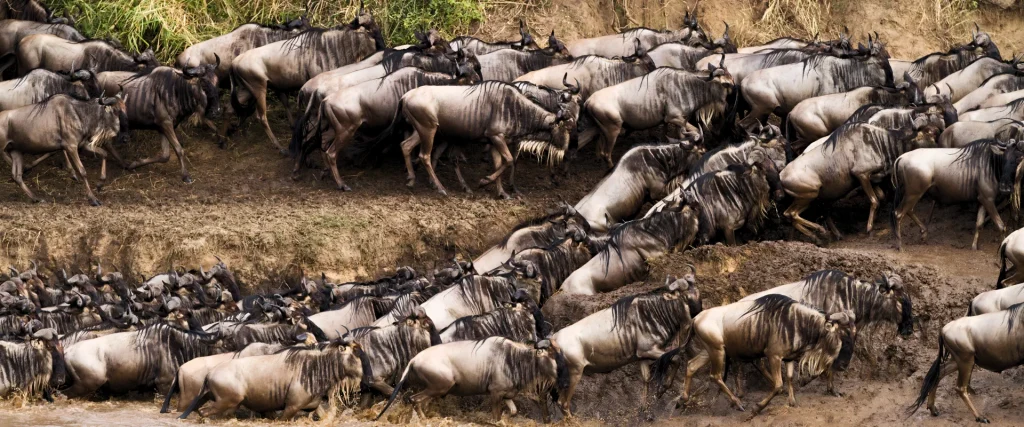
The Great Wildebeest Migration is one of nature’s most spectacular events, with each animal traveling between 800 to 1,000 miles across Africa. This journey is perilous, as thousands of wildebeests fall victim to predators and natural barriers each year.
Despite these dangers, wildebeests possess a strong sense of smell that helps them find rain and fresh grass, guiding their path. The migration consists of numerous smaller groups rather than one massive herd, allowing for more efficient movement.
With the ability to run up to 50 miles per hour, wildebeests can swiftly escape predators. Remarkably, this migration has been a part of Africa’s natural rhythm for thousands of years, and the animals rarely get lost thanks to their keen sense of direction.
The Serengeti ecosystem, where much of this migration occurs, is recognized as a UNESCO World Heritage Site, highlighting its global importance. Communication among wildebeests through vocalizations and visual cues is essential, especially when over 250,000 calves are born during the migration season.
Migration Route Across Africa
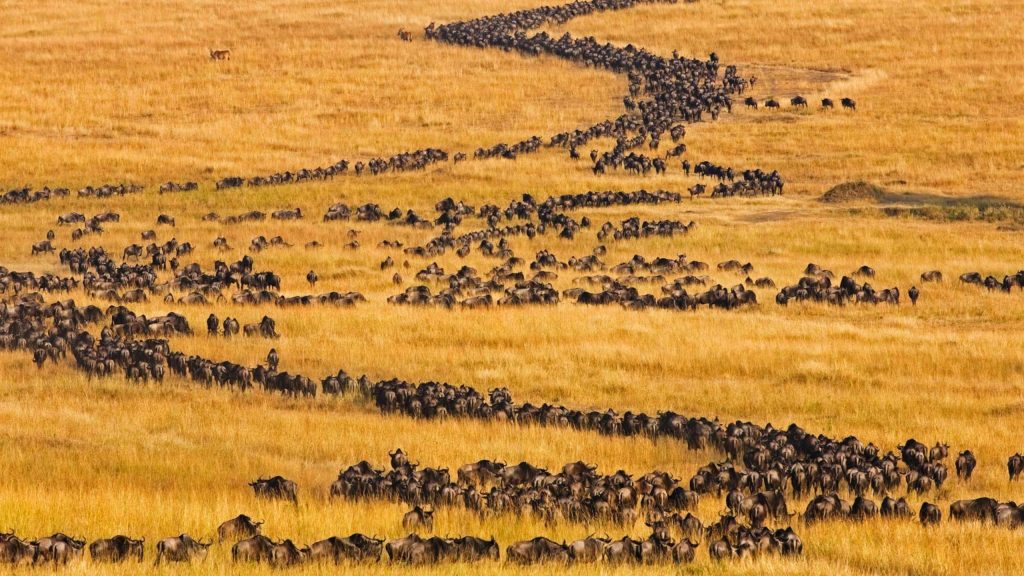
The wildebeest migration is an epic journey that begins in the Serengeti Plains of Tanzania around January. As the rains start, these animals move north, traversing the Western Corridor and crossing the Grumeti River by June. This river crossing is a dramatic spectacle, as it presents a significant challenge along their path. By July, the herds enter the Maasai Mara in Kenya, where they remain until September. This period offers some of the most thrilling wildlife viewing opportunities, as predators follow the herds.
In October, the wildebeests start their return journey southward back to the Serengeti. Rainfall patterns and the availability of grass heavily influence this route, which is ingrained in their instincts and has been followed for generations. Along the way, they encounter major obstacles, such as the Mara River, where many succumb to the swift currents and lurking crocodiles.
The migration route spans numerous national parks and protected areas, highlighting the importance of conservation efforts. However, human activities and climate change pose significant threats to this ancient path, potentially disrupting one of nature’s most remarkable events.
| Month | Location | Key Events |
|---|---|---|
| January | Southern Serengeti | Start of migration, Calving season |
| June | Western Corridor, Grumeti River | River crossings |
| July | Entering Maasai Mara | Peak of migration |
| October | Returning to Serengeti | Completion of migration |
Best Time to See the Migration
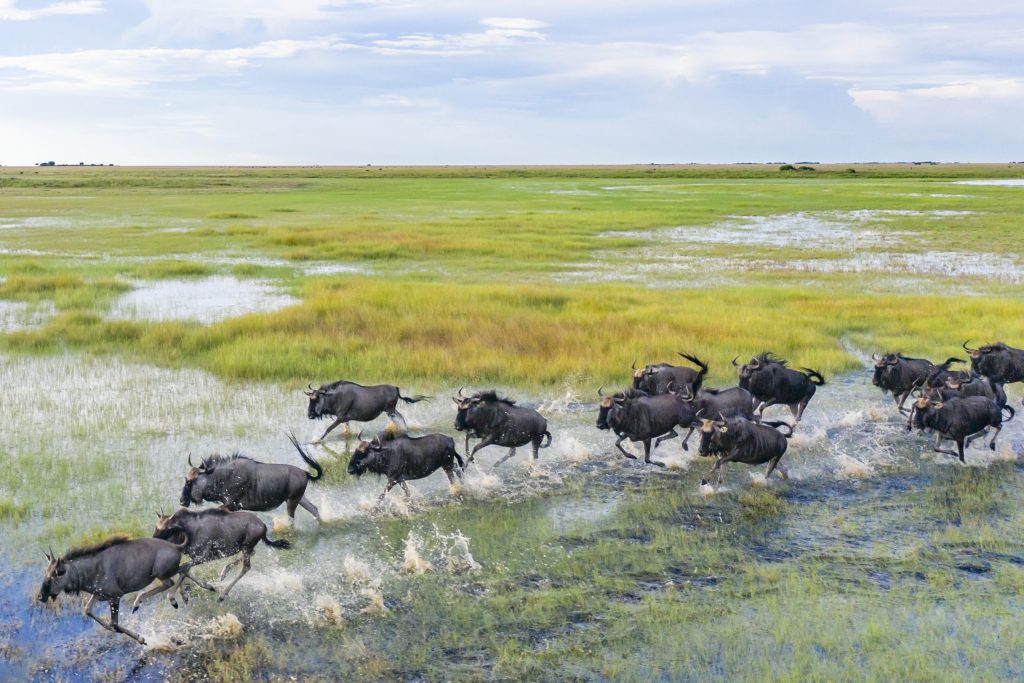
The best time to witness the Great Wildebeest Migration varies depending on the stage you wish to experience. From January to March, the southern Serengeti becomes a nursery during the calving season, attracting predators and offering an intense wildlife spectacle.
In June and July, the herds face the daunting river crossings at Grumeti, a highlight for many. The iconic Mara River crossings occur from August to September, where survival hangs by a thread as wildebeests brave the waters.
As October and November roll in, the herds begin their southward journey through the Serengeti. Keep in mind that weather conditions can impact the timing and visibility of these events.
Early booking is crucial for securing prime viewing spots and accommodations, as the migration attracts significant crowds. Opting for guided tours can enrich your experience with expert insights.
Consider what type of wildlife you want to see when planning your visit to avoid peak tourist times and make the most of this natural wonder.
- The best time varies based on which stage of the migration you wish to see.
- January to March is ideal for calving season in the southern Serengeti.
- June to July offers the spectacle of river crossings at Grumeti.
- August to September is perfect for witnessing the Mara River crossings.
- October to November sees the herds moving south through the Serengeti.
- Weather conditions can affect the timing and visibility of the migration.
- Booking early is advised to secure the best viewing spots and accommodations.
- Guided tours can provide expert insights and enhance the experience.
- The migration attracts large crowds, so plan carefully to avoid peak tourist times.
- Consider the type of wildlife you want to see when choosing your visit time.
Details of the Calving Season
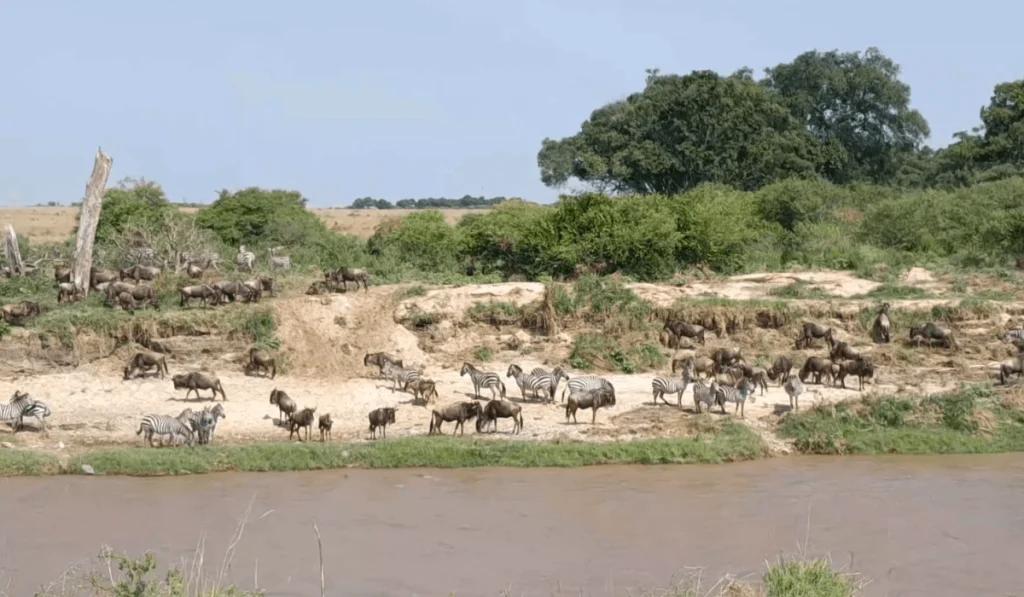
Between January and March, the southern Serengeti witnesses a remarkable event: the calving season of the Great Wildebeest Migration. In a span of just two to three weeks, over 500,000 calves are born, creating a spectacle of life and survival.
This synchronized birthing strategy overwhelms predators, such as lions and hyenas, enhancing the survival chances of the young. Remarkably, calves are able to stand and run mere minutes after birth, a crucial adaptation for evading predators.
The nutrient-rich grasses of the region support the lactating mothers, ensuring the newborns receive plenty of nourishment. This season is vital for the growth of the wildebeest population.
It also draws a diverse array of wildlife, offering a rare glimpse into the early life stages of these animals. For those fortunate enough to visit during this time, the sparse tourist presence allows for a more intimate and undisturbed experience of nature’s wonders.
Migration to Masai Mara
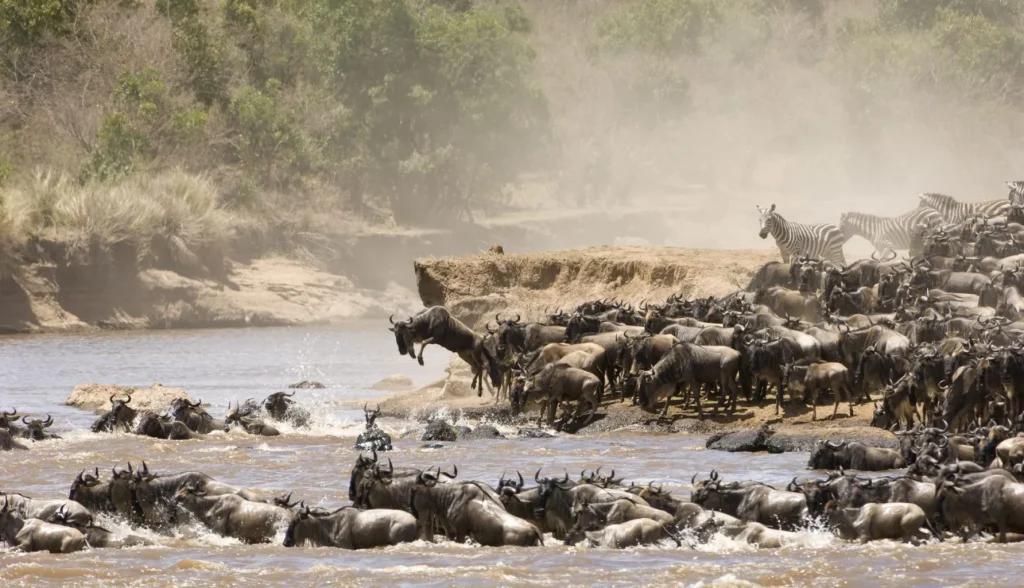
Between July and September, the Masai Mara becomes a crucial stopover during the wildebeest migration. This period offers spectacular game-viewing opportunities as the open savannahs provide excellent visibility. One of the most dramatic events is the crossing of the Mara River, where wildebeests face predation from crocodiles and the challenge of strong currents. This natural spectacle draws tourists from around the world, coinciding with the peak tourist season. The Mara Triangle, a quieter part of the reserve, offers a more serene viewing experience. Visitors can also enjoy balloon safaris, providing a breathtaking aerial view of the migration.
The Masai Mara is not only home to wildebeests but also supports a diverse range of species, enriching the ecosystem. Local Maasai communities live alongside the wildlife, offering cultural insights to those who visit. Conservation efforts in the area are vital to maintain these rich habitats and ensure the survival of its wildlife.
Witness the Thrilling River Crossings
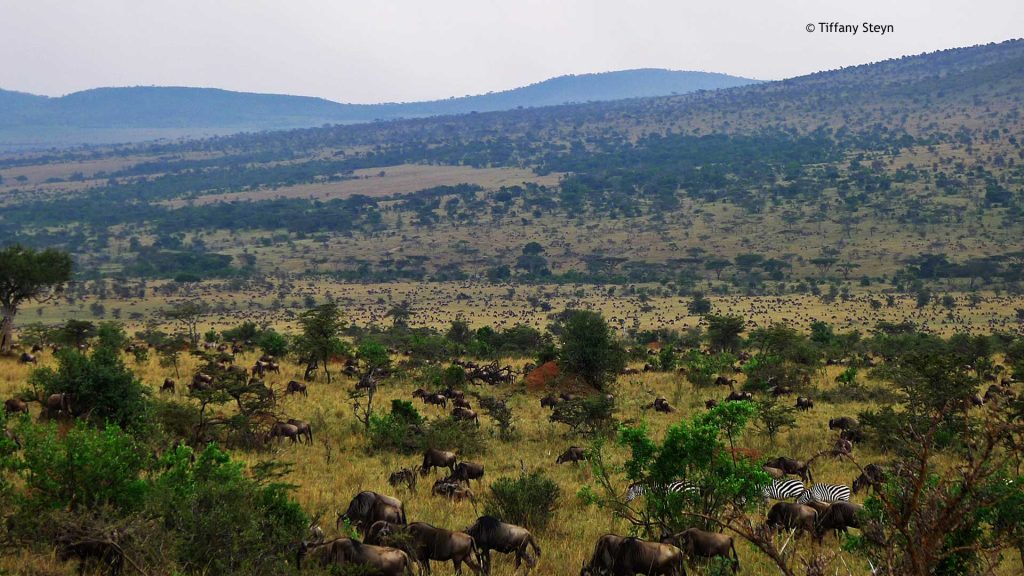
The Mara and Grumeti rivers are famous for their dramatic river crossings during the Great Wildebeest Migration. These crossings are unpredictable, with wildebeests gathering at the banks, often hesitating before taking the plunge. This hesitation creates tension-filled moments that are a spectacle for photographers and nature lovers alike.
The crossings are fraught with danger, as crocodiles lurk in the waters, ready to strike. Many wildebeests don’t make it across, falling prey to these predators or the strong currents. This chaos also attracts big cats, adding another layer of peril.
Viewing points along the river offer the best spots to witness these raw and powerful displays of nature. Timing your visit to see a crossing requires careful planning, but it is incredibly rewarding.
The crossings highlight the wildebeests’ instinctual drive to survive, making them a key attraction for those seeking the thrill of the wild.
Understanding African Safaris
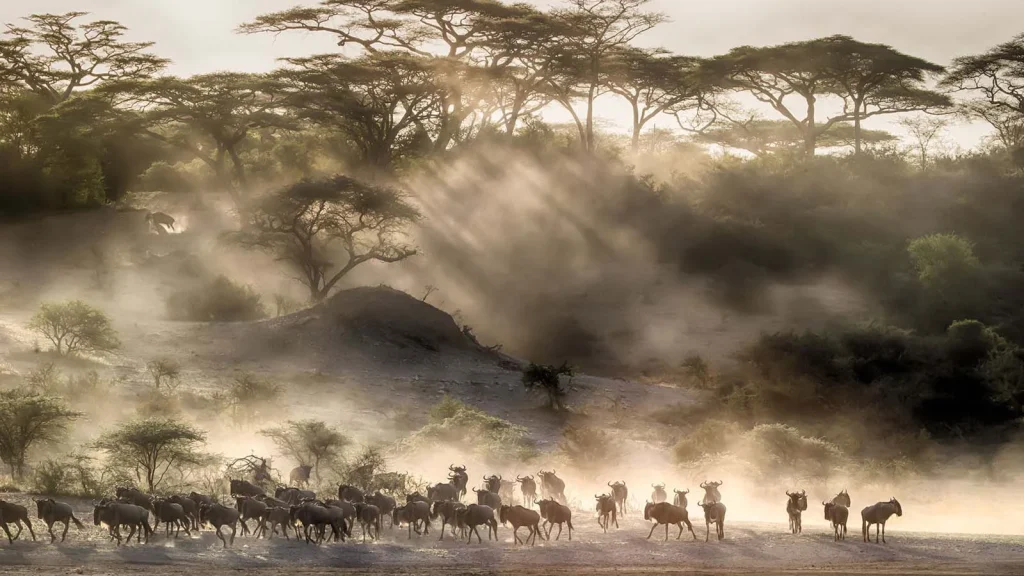
African safaris provide an incredible opportunity to see wildlife in their natural settings, offering experiences that vary greatly depending on the type chosen. Options include game drives, where visitors traverse the landscape in vehicles to spot animals, or walking safaris that offer a more intimate encounter with nature. For those seeking adventure, mobile safaris move from one location to another, allowing for diverse wildlife viewing. Every safari is led by seasoned guides who share their local insights, enhancing the experience.
Visitors can choose from a range of accommodations, from luxurious lodges to simple campsites, ensuring comfort that suits different preferences. Key items to pack include binoculars for bird watching, cameras to capture moments, and clothing suitable for changing weather conditions. It’s essential to respect the wildlife and their habitats, maintaining a safe distance and following guidelines.
Safari trips can be customized to focus on specific interests, whether it’s spotting the “Big Five” or exploring bird species. Various destinations across Africa promise unique experiences, each rich in biodiversity. Before embarking on a safari, travelers should consider health precautions, such as necessary vaccinations, to ensure a safe journey. Embracing sustainable tourism practices helps protect these environments for future generations.
Planning a Memorable Safari
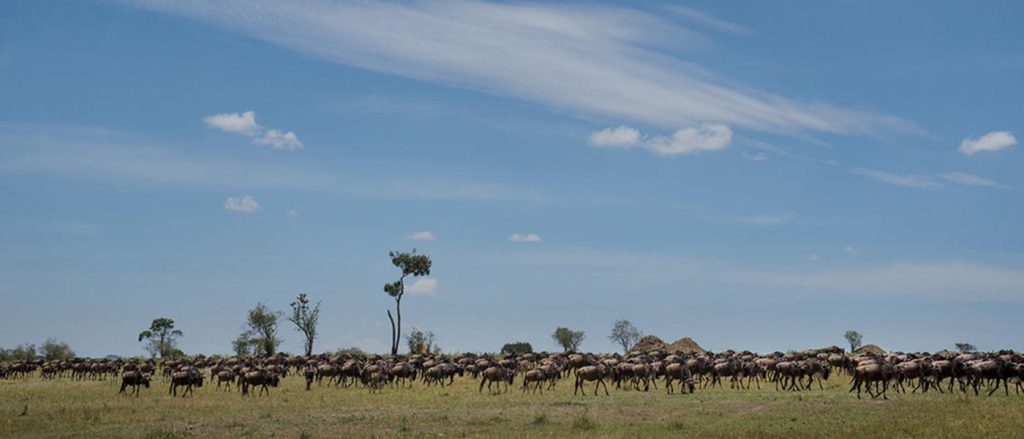
Embarking on a safari to witness the wildebeest migration across Africa requires thoughtful planning. Begin by deciding on the region and the type of experience you wish to have. Each region offers unique wildlife and landscapes, so choose according to your interests. Timing is crucial; research the best months to visit for optimal wildlife viewing, as the migration patterns can vary. Look into various safari operators, paying attention to their reputation and customer reviews, to ensure a reliable and enjoyable experience.
Budgeting is another key aspect. Allocate funds for accommodations, park fees, and additional activities like guided night drives or cultural visits. Planning a diverse itinerary will enhance your adventure. Before departing, confirm that your travel documents such as visas and passports are current.
Packing suitable gear is critical for comfort in the wilderness. Lightweight clothing, sturdy shoes, and a good camera are essential. Understanding local culture and customs will enrich your experience, fostering respectful interactions with locals.
Finally, consider purchasing travel insurance to cover any unforeseen events. Aim to minimize your environmental impact by following eco-friendly practices during your safari. This approach ensures that your safari is both memorable and responsible.
Frequently Asked Questions
1. What is the wildebeest migration?
The wildebeest migration is a natural event where millions of wildebeest move across Africa looking for fresh grass and water.
2. Why do wildebeests migrate?
Wildebeests migrate to find new areas with enough food and water, crucial for their survival throughout the year.
3. Where do wildebeests go during their migration?
Wildebeests travel across places like the Serengeti in Tanzania and the Maasai Mara in Kenya during their migration.
4. When is the best time to witness the wildebeest migration?
The best time to see the migration is usually between July and October when the wildebeests move to and from the Maasai Mara.
5. How does the migration affect the ecosystem?
The Great Wildebeest Migration is one of the most remarkable natural events in Africa. Every year, over 1.5 million wildebeests, along with zebras and gazelles, embark on this Great Wildebeest Migration across the plains of Tanzania and Kenya. The migration spans an impressive 1,800 miles, driven by the search for grazing and water. This incredible journey, known as the Great Wildebeest Migration, is a must-see spectacle that offers unique wildlife viewing opportunities.
As the Great Wildebeest Migration moves from the Serengeti Plains in Tanzania into Kenya’s Maasai Mara, the animals face numerous dangers, including predators like lions and crocodiles. One of the dramatic highlights of the Great Wildebeest Migration is the river crossing at the Mara and Grumeti rivers, where the wildebeests face the terrifying challenge of crossing predator-infested waters.
The Great Wildebeest Migration plays an essential ecological role, spreading seeds and nutrients across the plains, which supports a diverse range of wildlife. This not only benefits the wildebeests but also the other animals that rely on this natural event for food and water. The Great Wildebeest Migration is a vital part of the Serengeti and Maasai Mara ecosystems, creating a dynamic balance in nature.
If you’re planning your safari during the Great Wildebeest Migration, consider timing your trip for calving season or one of the dramatic river crossings to experience the migration at its most thrilling. Booking early is recommended, as these events draw tourists from around the world. Additionally, engaging in sustainable tourism practices ensures that the Great Wildebeest Migration continues to thrive for generations to come. For those seeking a true framat adventure, the Great Wildebeest Migration offers a once-in-a-lifetime opportunity to witness the beauty and drama of nature in action.



